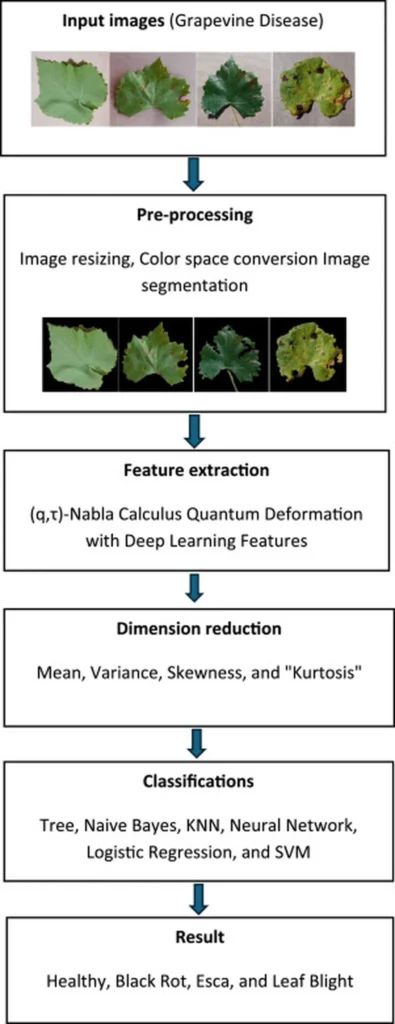In the heart of Jordan, a pioneering approach to grapevine disease detection is brewing, promising to revolutionize the way we safeguard our crops and secure our food supply. Ahmad Sami Al-Shamayleh, a researcher from the Department of Data Science and Artificial Intelligence at Al-Ahliyya Amman University, has developed a novel hybrid method that combines quantum deformation features with deep learning to identify diseases in grapevine leaves with unprecedented accuracy.
The stakes are high in the world of agriculture. Grapevine diseases can lead to significant financial losses and threaten food security. Traditional manual diagnosis methods are labor-intensive and require specialized knowledge. Al-Shamayleh’s research, published in the journal MethodsX (translated to English as “MethodsX”), offers a promising solution to these challenges.
The methodology is a blend of cutting-edge technologies. “We utilize (q,τ)-Nabla calculus quantum deformation features to extract robust handcrafted features that capture local texture and structural variations associated with disease symptoms,” Al-Shamayleh explains. This is combined with deep learning features extracted using a pre-trained convolutional neural network, which captures high-level semantic information from leaf images. The concatenated feature vectors are then fed into a machine learning classifier for final prediction.
The results are impressive. Test results on a dataset of grapevine leaf diseases show that the proposed method outperforms individual approaches in accuracy. This means faster, more reliable disease detection, which can help minimize financial losses and support effective plant disease management.
The implications of this research extend beyond the vineyards. In an era where climate change and population growth are putting increasing pressure on our food systems, innovative solutions like Al-Shamayleh’s are more important than ever. “This method can improve crop yield and contribute to food security,” Al-Shamayleh states, highlighting the broader impact of his work.
As we look to the future, this research could shape the development of new tools and technologies in the field of agriculture. By combining quantum deformation features with deep learning, Al-Shamayleh has opened up new possibilities for disease detection and management. This could lead to more resilient crops, higher yields, and a more secure food supply for all.
In the words of Al-Shamayleh, “This is just the beginning. The potential of this method is vast, and we are excited to explore its applications further.” As we stand on the brink of a new era in agriculture, one thing is clear: the future is looking bright, and it’s looking green.

